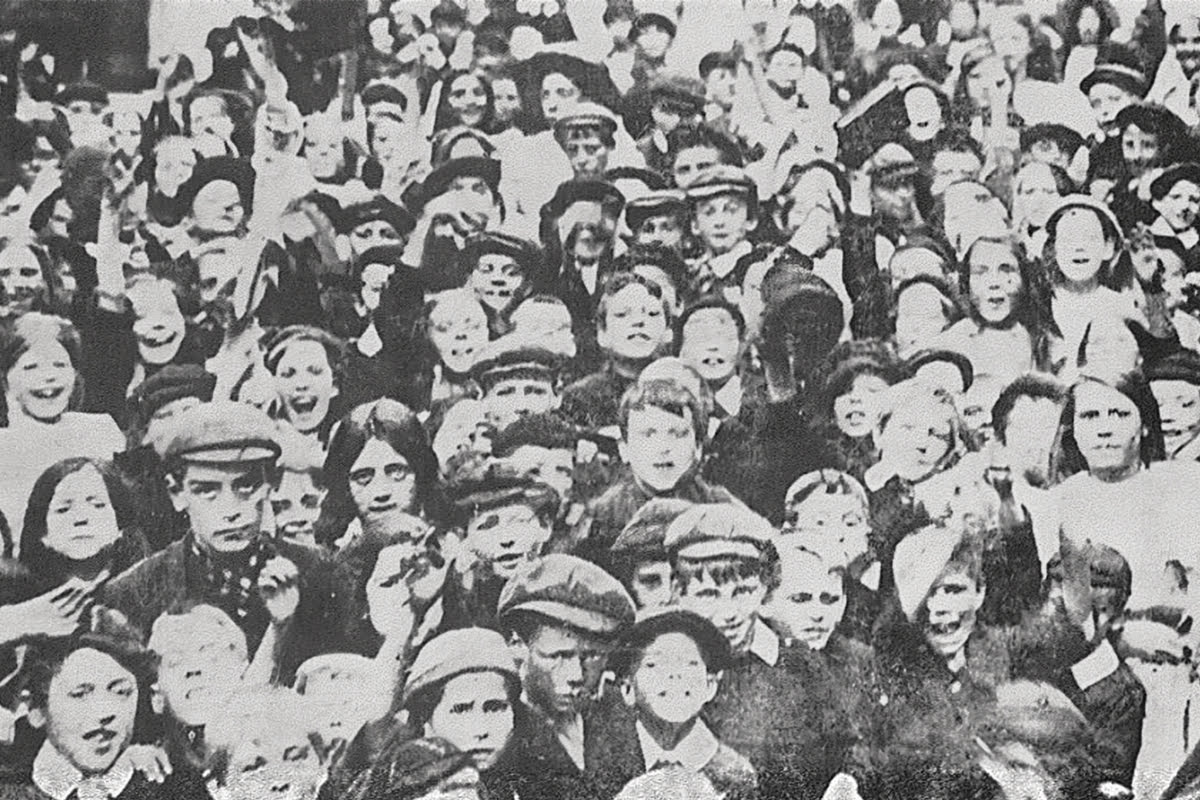Students at the Farnley Academy in Leeds recently held a three-day protest in response to a draconian toilet policy introduced by management.
The school is part of the GORSE multi-academy trust (MAT), which runs 13 academies across Leeds. It recently proposed extending an already strict toilet arrangement.
Already, in order to use the toilets during lesson times, students needed to have an official note, while a member of staff stands guard. But the new setup would now take this to the extreme, locking all but one toilet in the entire school.
As a result, in late February, hundreds of students started to demonstrate on their own initiative outside of the academy.
Suspensions

Farnley Academy is not the only school seeing student protests against ridiculous policies. Demonstrations have been happening across the country, spreading like wildfire through social media, in response to senseless rules implemented by out-of-touch school management.
Similar protests have taken place over stringent toilet policies at Oasis Academy Mayfield in Southampton, Haven High Academy in Lincolnshire, and Penrice Academy in Cornwall.
At Weston Secondary School, another academy in Southampton, protests over toilet arrangements have seen as many as 200 pupils participating.
As well as similar restrictions on using toilets at break times, the introduction of gender-neutral bathrooms led to a situation where there are an insufficient number of cubicles. This means that students spend most of their break queuing to use the toilet.
Some students also reported cases of sexual harassment. “We don’t think it’s fair,” one 14-year-old student was quoted as saying. “Girls in our school are not comfortable. People think it’s funny to unlock the doors while you’re in there.”
“The boys have got this thing about putting their phone over the toilet or under the doors to try to get pictures of them (the female students),” a pupil’s mother added. “Why did the school not tell us about it before, and get people’s opinions before they put something in place?”
Shockingly, the school management has responded to these protests by suspending multiple students.
Pressures
Another issue angering many students is uniform policies, with female students in particular being policed about the length of their skirts. Rainford High in Merseyside, for example, has seen protests over this issue.
Other harsh measures are being rolled out elsewhere. This is creating a pressure cooker environment in many schools.
For instance, Kingsway School in Greater Manchester, again a member of a MAT, introduced searches and inspections – of school equipment and uniforms – for every student entering the school.
This led to massive queues and delays at the start of the school day, sparking outrage. Staff and students can see that this is a clear misuse of resources, adding demands on teachers who are already overworked and stressed.
Austerity

The introduction of these strict behaviour policies is not accidental or arbitrary, but is linked to ongoing austerity and academisation.
Funding for schools is at an all time low, with woeful understaffing prevalent across education. Staff are expected to manage ever-growing class sizes, with all the extra lesson planning and marking that this requires, alongside a range of other duties.
But denied the resources to adequately engage with students, teachers are forced to rely on superficial, sweeping measures to maintain order.
As one teacher in Merseyside explained, speaking to Socialist Appeal comrades on a recent picket line:
“No teacher that I know delights in strictness. We would not need draconian behaviour policies if we had enough teaching staff (including teaching assistants) to cover class sizes; a manageable level of staff duties to monitor key areas (such as toilets), where the most serious bullying occurs; and enough time to plan lessons we are proud to deliver.
“A popular slogan among teachers has been: ‘Our working conditions are your learning conditions.’ Teachers and students are not enemies, but allies, with a shared interest in fighting against the Tories and the bosses.”
The Tories’ drive for academisation, meanwhile, has amplified all of these pressures on both teachers and students, with MAT bosses infamous for driving down staffing levels, pay, and conditions in order to boost their bank balances.
It is no coincidence, therefore, that many of the protests highlighted above are at academies.
Anger
Frustration is clearly growing amongst school students everywhere. Indeed, footage of these protests, and advice on how to organise them, is spreading via TikTok, as students discuss the problems they share.
This generation is experiencing first-hand Britain’s school system failing apart. And academisation is leading to the corrosive effects of profit and marketisation seeping into education.
Understaffed and under-resourced schools are nothing new. But the process of academisation – accelerated under successive Tory governments – has worsened these problems.
The 2010 Academies Act gave the government the power to enforce an academy order, converting underperforming or ‘coasting’ schools into academies. This has led to 78% of secondary schools becoming academised.
Academisation was dressed up as a way of helping struggling schools. But research involving these schools shows that it has had the opposite effect, as many forewarned.
MATs are heralded as giving schools more flexibility to pay their teachers a higher wage, for example. But classroom teachers in both primary and secondary academies earn, on average, at least £1,300 less than their counterparts in local authority maintained schools.
On the other side of the scale, upper management are laughing all the way to the bank. In 2019/20, almost two-thirds of trusts (1,772) reported paying at least one individual between £100,000 and £150,000.
Radicalisation
No wonder students are drawing radical conclusions, when their schools are falling apart in front of their eyes; and when policy-makers seem to be more concerned about the length of skirts than about providing an adequate supply of staff or essential facilities.
Perhaps if material conditions in schools improved, then so would classroom behaviour.
These students have also seen their own teachers organising and striking, as well as other workers – all uniting and fighting across the country for better pay and conditions.
And many students will have learnt how to organise and protest through movements like Black Lives Matter, the climate strikes, Kill the Bill, and other recent youthful demonstrations.
All of these inspiring examples will no doubt have empowered school students to take action.
Traditions

There is also a tradition of school strikes for these students to look too.
In Britain in 1911, and again in Dublin in 1913, school children – after seeing their working-class communities and their families turn to strike action – started to fight for better conditions themselves.
Some estimates suggest that around 62 towns had school strikes in this period, with demands for free school meals and for an end to caning.
As of yet, today’s protests are not at the same level of organisation as those in 1911. Back then, local action was organised by strike committees. And students’ sought to imitate the militant conduct of the railway and dockers’ strikes of the time.
Such committees should be formed today: composed of teachers, pupils, and parents – standing in solidarity, and fighting together for control over school finances and policies.
Fightback
It is clear that these protests represent a boiling point being reached amongst school students.
There is an accumulation of frustration with the state of the country’s schooling system. And the current resurgence in the class struggle is inspiring students to take action themselves.
To advance, the struggles being waged by teachers, workers, and pupils must be brought together into a common fightback against the bosses and the Tories.
Ultimately, both the issue of pay and conditions for staff, and the ludicrous rules being imposed on students, come down to a question of management and control.
We say: Open the books! Let teachers and working-class communities decide how money should be spent in our schools!
Above all, we need to put the education system in the hands of workers, teachers, and students, so that we – not the Tories or the bosses – can democratically decide what policies are actually needed in our schools.






